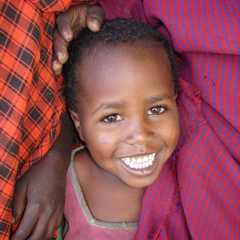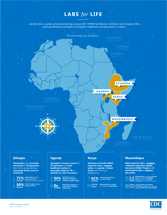Getting Closer to an AIDS-Free Generation
Proven science, smart investments, and shared responsibility
“Ten years after PEPFAR was launched, we are actually able to see and reach out and hopefully touch the prospect of an AIDS-free generation.” - -U.S. Secretary of State John Kerry, February 2013
For more than 30 years CDC has played a leading role in achieving scientific progress and translating science into action to save millions of lives in the global fight against HIV/AIDS. CDC has also been a principal implementing agency for the U.S. President’s Emergency Plan for AIDS Relief (PEPFAR) since it was launched in 2003.
Landmark scientific advances and their successful implementation have brought the world to a point where we can dramatically drive down the rate of new HIV infections and virtually eliminate infections in babies and children. Through shared global responsibility and smart, science-based investments, we can save millions more lives and achieve an AIDS-free generation (see sidebar below).
Progress has been particularly rapid due to recent scientific breakthroughs as well as accelerated targets set by President Obama, who has championed the achievable goal of an AIDS-free generation. The Administration’s Blueprint for creating an AIDS-free generation outlines specific steps that PEPFAR is taking to uphold America’s commitment to fight this deadly disease.
An AIDS-free generation
 Photo: David Snyder
Photo: David SnyderAn AIDS-free generation means that
Virtually no children are born infected with the HIV virus
As these children become teens and adults, they are at far lower risk of becoming infected than they would be today, thanks to a wide range of HIV prevention tools
If they do acquire the HIV virus, they have access to treatment that helps prevent them from developing AIDS and passing the virus to others
Scientific advances guide strategy
Science brought us to the point where we can actually call for an AIDS-free generation. And it is science that underpins all our efforts to achieve this goal and save even more lives. Research shows that three key prevention interventions can dramatically drive down the rate of new infections:
Antiretroviral Treatment of HIV-Positive Persons
Preventing Mother-to-Child Transmission of HIV
Expanding Voluntary Medical Male Circumcision
When used with HIV testing and counseling, condoms, and other prevention interventions, these tools put us on a path for eliminating new HIV infections. As the key science-based public health and disease prevention agency and with longstanding, trusted relationships with foreign Ministries of Health, CDC plays a key role in implementing this strategy.
Through its in-country presence, CDC works with more than 60 partner countries to build their capacity to lead their national HIV/AIDS response. CDC is also supporting research to identify the most effective means to scale-up these prevention interventions based on the characteristics of local HIV epidemics. CDC’s data-driven, evidence-based approach helps ensure that high impact interventions are delivered effectively and efficiently to maximize health outcomes and epidemic change.
Shared Responsibility for an AIDS-free generation
Investments in global health are a pillar of American diplomacy, advancing our national interests and helping other countries become more stable. The United States will continue to play its part in this global fight, but no one can do it alone. President Obama has called on the world to join the United States in this undertaking. Creating an AIDS-free generation requires the commitment and leadership of many countries, reinforced with support from donor nations, civil society, people living with HIV, faith-based organizations, the private sector, foundations, and multilateral institutions such as the Global Fund to Fight AIDS, Tuberculosis and Malaria, to which the United States is the largest contributor.
Labs for Life Infographic:

Get email updates
To receive email updates about this page, enter your email address:
Contact Us:
- Centers for Disease Control and Prevention
1600 Clifton Rd
Atlanta, GA 30333 - 800-CDC-INFO
(800-232-4636)
TTY: (888) 232-6348
24 Hours/Every Day - Contact CDC-INFO
 ShareCompartir
ShareCompartir


